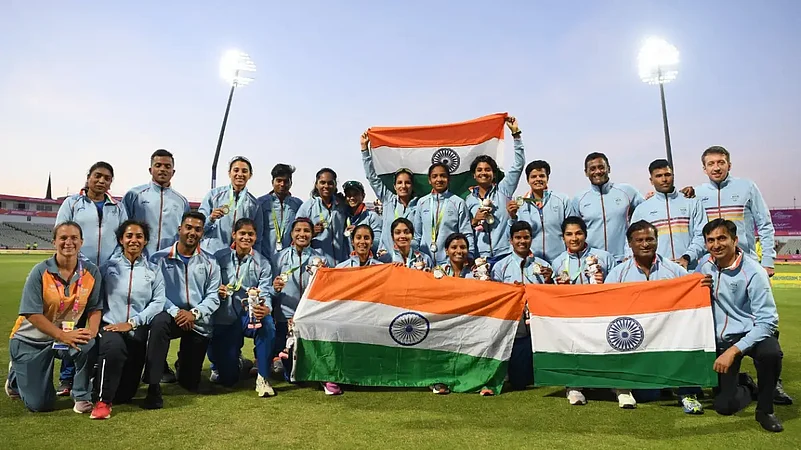The Commonwealth Games (CWG) have always had the middle child syndrome. Not as prestigious and loved as the Olympics, not as clearly defined as the Asian Games, they were neither here nor there. Good but not great. Nice but not really necessary, especially in times of extreme economic and environmental stress.
A few days ago Victoria, Australia, said they were bailing out as hosts of the 2026 CWG. The budget had swelled from an estimated Australian $2 billion (USD 1.36 billion) to $7 billion (USD 4.65 billion).
“Frankly, $7 billion for a sporting event, we are not doing that," Victoria State Premier Daniel Andrews said. "I will not take money out of hospitals and schools to host an event that is three times the cost estimated.”
Victoria’s pull-out has raised questions about the relevance of the CWG. In fact, these have been asked for several years now.
A year before the 2022 Birmingham Games, Louise Martin, President of the Commonwealth Games Federation (CGF), was candid about the future of the CWG.
"We can’t stay as we are - it’s not sustainable,” Martin said. “We have to move on, we have to modernise. In my opinion, Birmingham will be the last one of this size (nearly 4,500 athletes, 270 medal events, 19 disciplines). In the future it will be more in keeping with what the country it’s (the Games) going to wants."
It is unlikely the Games will be sent to the grave just as yet. But future editions will be streamlined and contemporary. The CGF recommendation is to have no more than 15 disciplines. Host nations will have the freedom to include local favourites, such as T20 cricket, beach volleyball and three-a-side basketball (all three games featured at CWG 2022). Only athletics and swimming from the traditional staples will be mandatory.
Events like CWG are also likely to have sustainable stadiums. One of the grouses against mega-events is they necessitate the building or renovation of a lot of infrastructure. And once the event concludes it lies empty or underused, huge concrete ghosts with no real need, however much politicians and realtors talk them up as “helping creating sports culture.”
Now, in increasingly environment conscious times, competitions are experimenting with stadia that can be dismantled after the party. At the 2022 Fifa World Cup in Qatar, one of the talked about venues was Stadium 974. It was made from 974 shipping containers, and the number also happens to be Qatar’s country code. Stadium 974 wasn’t without its problems, but it could indeed be broken down and space was freed up again.
Coming to India, we have a paradoxical relationship with the CWG. The Games are a creation of the British, who ruled and pillaged India for decades. But then we do well in the CWG. In Birmingham, India won 22 gold and 61 medals in all, finishing fourth in the medals tally among 72 nations. That is a solid performance, considering heavyweights like UK and Australia compete in the CWG. They may not always send their best teams, but at times they do.
Thanks to CWG 2022, Avinash Sable can tell his grandkids, “You know how difficult it is to beat Kenyans at distance running, right? I beat not just any Kenyan, but a Kenyan Olympic gold medallist (Conseslus Kipruto), when I got silver in the 3000m steeplechase.”
Once, it was unthinkable that there would be an Indian 1-2 finish in track and field at the Asian-plus level. Eldhose Paul and Abdulla Aboobacker did it in Birmingham, taking gold and silver, respectively, in the triple jump.
“Our sports culture has gotten stronger after Neeraj Chopra won a medal in the Olympics. Hamara belief bhi badh gaya hai. (Our belief has increased). We believe we can do anything,” Paul said.
There is no doubt, therefore, that the CWG have sporting importance. They are a gateway to Olympian heights, the Ranji Trophy before Test cricket, and the Ama Dablam before Everest.
Historically, too, they have played an important role in sports. It was actually the CWG which inspired the Olympics. In 1891, John Astley Cooper, an English clergyman, first mooted an event for competitors from across the British Empire. While that took nearly 40 years to come to fruition, the idea inspired Pierre de Coubertin. In 1896, five years after Cooper’s brainwave, the first Olympics were held.
It was also at the CWG that Roger Bannister, one of the pioneers of running, and his famed rival John Landy delivered one of the heroic races of all time. In the Vancouver 1954 edition, in a contest billed as ‘The Miracle Mile’, the two went toe to toe, till Bannister coaxed one final burst from his lungs and legs and edged out Landy. That the two brought out the best in each other could be seen in the fact that for the first time ever, No. 1 and 2 clocked a sub-four-minute mile. There is a statue of the two, in the final stages of the race, in Vancouver.
It’s not 1954 anymore, however. There are complex problems globally, and different priorities. “I will not take money out of hospitals and schools” was the operative part of Victoria Premier Daniel Andrews’ statement. The Commonwealth Games do have a place, but they need to reinvent, and stay trim and within budget.
















